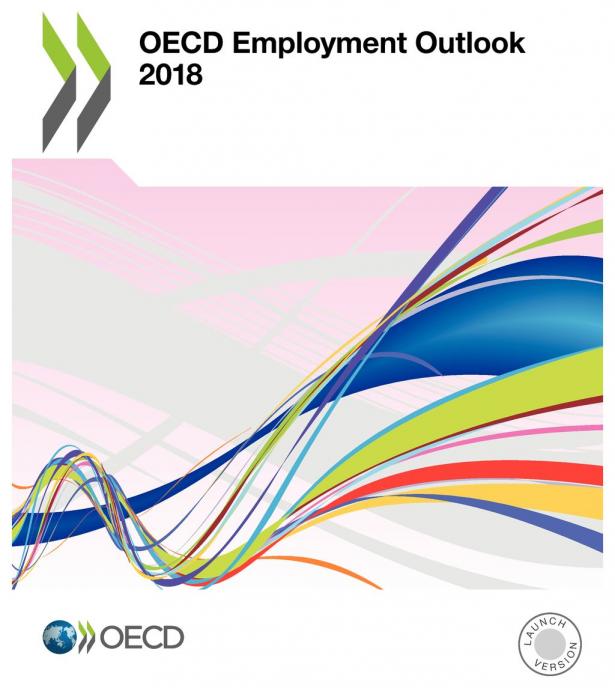Source: Organisation for Economic Co-operation and Development, July 4, 2018
The 2018 edition of the OECD Employment Outlook reviews labour market trends and prospects in OECD countries. Chapter 1 presents recent labour market developments. Wage growth remains sluggish due to low inflation expectations, weak productivity growth and adverse trends in low-pay jobs. Chapter 2 looks at the decline of the labour share and shows that this is partially related to the emergence of “superstar” firms, which invest massively in capital-intensive technologies. Chapter 3 investigates the role of collective bargaining institutions for labour market performance. Systems that co-ordinate wages across sectors are associated with better employment outcomes, but firm-level adjustments of sector-level agreements are sometimes required to avoid adverse effects on productivity. Chapter 4 examines the role of policy to facilitate the transition towards new jobs of workers who were dismissed for economic reasons, underlying the need of early interventions in the unemployment spell. Chapter 5 analyses jobseekers’ access to unemployment benefits and shows that most jobseekers do not receive unemployment benefits and coverage has often been falling since the Great Recession. Chapter 6 investigates the reason why the gender gap in labour income increases over the working life, stressing the role of the lower professional mobility of women around childbirth.
Related:
Press release
WEBINARS
Collective bargaining
Collective bargaining systems are at a crossroads in many OECD countries. In this webinar, we will assess the role that collective bargaining systems play for employment, wages, working conditions, wage inequality and productivity (chapter 3 of the publication). We will also discuss what policy-makers, unions and employers’ organisations can do to adapt their national bargaining systems to the challenges of a changing world of work.
The decline in wage growth
10 years after the beginning of the crisis, there are finally more people with a job than before. Yet, wage growth remains considerably below pre-crisis trends. In this webinar, we will address factors behind the persistent wage growth slowdown (chapter 1 of the publication). While low inflation and productivity growth explain much of these patterns, the dynamics of low-pay jobs and the wages associated to them also play a significant, but understudied, role.
KEY COUNTRY FINDINGS
United States
The Case For More Labor Unions Is The Most Obvious Case You Can Possibly Imagine
Source: Hamilton Nolan, splinter, July 5, 2018
….The Organization for Economic Cooperation and Development’s new annual Employment Outlook report is a particularly useful tool for gauging how the United States measures up to the rest of the developed world in terms of economic policies and outcomes. In this context, we have a lot of work to do: “The low-income rate in the U.S. [defined as the share of the working-age population living with less than 50% of median household disposable income] is one of the highest in the OECD,” the report says. “The rate in the U.S. is 14.8% compared to an OECD average of 10.6%. The lowest rate is found in the Czech Republic at just 5.8%.”….
Is it great to be a worker in the U.S.? Not compared with the rest of the developed world.
Source: Andrew Van Dam, Washington Post, Wonkblog, July 4, 2018
The U.S. labor market is hot. Unemployment is at 3.8 percent, a level it’s hit only once since the 1960s, and many industries report deep labor shortages. Old theories of what’s wrong with the labor market — such as a lack of people with necessary skills — are dying fast. Earnings are beginning to pick up, and the Federal Reserve envisions a steady regimen of rate hikes.
So why does a large subset of workers continue to feel left behind? We can find some clues in a new 296-page report from the Organization for Economic Cooperation and Development (OECD), a club of advanced and advancing nations that has long been a top source for international economic data and research. Most of the figures are from 2016 or before, but they reflect underlying features of the economies analyzed that continue today.
In particular, the report shows the United States’s unemployed and at-risk workers are getting very little support from the government, and their employed peers are set back by a particularly weak collective-bargaining system…..


Spread the word